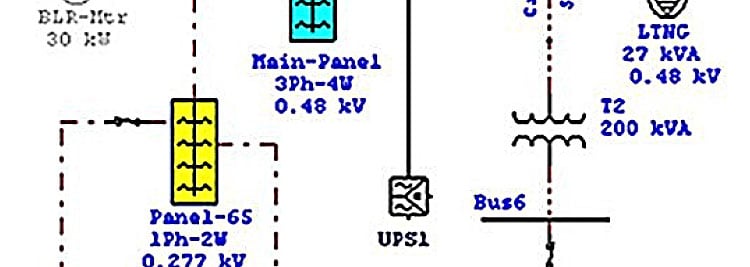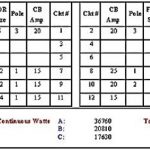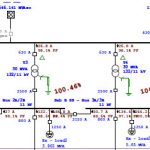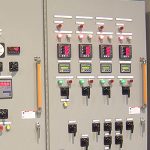
Motor Starting Study and Analysis recognises the probable voltage dip and acceleration time for a motor and the consequences of motor starting on a system. It assesses proper starting and running of motors on load with given system inertia without causing tripping or instability in the system. Other starting methods, such as autotransformer start, reactor, across-the-line, capacitor, or are also studied. If system voltage dips are a concern, Carelabs will propose the appropriate solutions.
The starting current of most AC motors is several times the normal full rated load current when starting from full line voltage. These large current requirements can result in nuisance tripping of protection breakers, excessive running currents, drop in terminal voltage etc. Dimming of lights as motors start up is a clear indicator that the power system may need investigation. It may have insufficient capacity or a better motor starting strategy may be required.
Why is Motor Starting Study and Analysis Done?
The starting torque varies directly as the square of the applied voltage. Thus excessive starting current results in drop in terminal voltage and may result in the following:
- Failure of motor starting due to low starting torques.
- Unnecessary operation of under voltage relays.
- Stalling of other running motors connected to the network.
- Voltage dips at the power sources and consequent flicker in the lighting system.
The most serious effect of a large voltage drop or brown out is an increase in current of all devices servicing a constant load. Static power supplies such as computers and ballasts for lighting must increase the current to deliver the same amount of power resulting in overheating and eventually burn-out. Other induction motors operating at sync speed will increase their current draw until it reaches maximum current and may slip out of sync further increasing the current demand.
Motor starting studies assists in the choice of the proper motor design, the best method of starting and the proper system design for reducing the effect of the motor starting. Motor starting studies are essential in determining the impact on system voltage during starting and in establishing whether the motor will start satisfactorily and come up to speed. The result of these studies allows engineers
- To start motors individually
- Use load transitioning to test the impact of fast bus transfer voltage
- Enable load-group actions.
In various electrical installations in industrial and commercial units, engineers are continuously verifying and stimulating motor starting and acceleration systems to determine whether they are working properly. The essential areas they must evaluate are the starting, stopping and restarting of electrical motors.
What is Done During Motor Starting Study and Analysis?
Motor starting studies vary from instantaneous start-up of one or more of the largest motors to detailed simulation of the current, voltage and speed with respect to time. This allows engineers to test different slow start mechanisms ranging from auto-transformers to variable frequency drives and determine the optimum settings for start-up time and effect on the system. If a starting device is needed, its characteristics and ratings can be easily determined.
Study of motor starting methods can be done using both static and dynamic simulation methods. These techniques have their own advantages and disadvantages. We believe mainly in transient or dynamic motor starting studies that reproduce measured motor starting conditions.
- Load flow type solution with the observed starting impedance of the motor modelled as part of network modelling.
- Short circuit method type of calculations considering pre-fault short circuit conditions and using voltage drop calculations considering motor starting currents. Alternatively
- Where precise dynamic model of the motor electric circuit and load – torque characteristics are existing, dynamic model of the motor can be utilised in traditional transient stability algorithm to evaluate the impact of the motor starting.
- When there is a lack of precise model information, transient stability studies can be utilised, where the measured starting current can be applied as a nodal injection at the motor bus as a dynamic event and the system response to this dynamic event can be measured.
How is Motor Starting Study and Analysis Performed?
The output torque is related to square of the voltage. If an AC induction or synchronous motor is started while attached to a mechanical load on the shaft, inrush current can be up to 6 times full-load current and will be drawn for a longer time. The power system while offering normal service to the remainder of the industrial or commercial system, must also be capable to source enough inrush current to any motor
As electrical consultants, motor starting studies help to improve the reliability engineering for the entire building system and industrial complex. We help to determine the best way to start large motors in a group help keep large investments of yours running and lasting longer.
There are various ways to start a motor including:
- Direct supply voltage
- Direct supply voltage with compensation
- Auto-transformers
- Soft starters
- Star-Delta Starters
- Variable Frequency Drives (VFD)
Steps in motor starting analysis:
Step 1: Motor starting analysis starts at the client site to gather current and historical information.
Step 2: Then simulations are run using these measured data and information from the manufacturer.
Step 3: From our computer models, we will be able to predict the operation for new installations and to diagnosis problems and offer solutions for existing motor installations.
Step 4: We utilise both static and dynamic techniques to create the starting sequence of motors and normally depend on dynamic analysis to recreate observed and measured starting conditions.
Following are various types of motor starting study:
The Voltage Drop Snapshot
This method examines the effect of voltage dip during motor-starting is to ensure the maximum instantaneous drop that occurs leaves bus voltages at acceptable levels throughout the system. This is done by inspecting the power system that tallies to the worst-case voltage. Through appropriate system modelling, this study can be performed by various calculating methods using the digital computer. Voltage drop snapshot study is beneficial only for measuring system voltages.
The Detailed Voltage Profile
This study allows a more exact examination of the voltage drop situation. Regulator response, exciter operation, and sometimes governor action are modelled to accurately represent transient behaviour of local generators. This type of study is similar to a simplified transient stability analysis and can be considered a series of voltage snapshots throughout the motor-starting interval including the moment of minimum or worst-case voltage.
The Speed-Torque and Acceleration Time Analysis
It is the most precise analysis for motor-starting conditions. Like transient stability study, speed-torque study gives electrical and accelerating torque calculations for definite time intervals during the motor starting period.
In some conditions, the motor may not be able to break away from standstill. A speed-torque study, mainly when done using a computer program, can foretell these problematic areas and allow corrections to be made before difficulties arise. Speed-torque analysis can help in autotransformer magnetizing current, when exclusive starting techniques are needed, like autotransformer start, reduced voltage starting etc., and it can determine the peak time to switch the transformer out of the circuit. The initial performance of wound rotor motors is inspected using this analysis.
Carelabs uses latest software to calculate speed, slip, electrical output torque, load current, and terminal voltage data at discrete time intervals from locked rotor to full load speed. Also, voltage at important locations throughout the system during start-up will be monitored. The study can help select the best method of starting, the right motor design, or the required system design for minimizing the impact of motor starting on the entire system.
Carelabs is authorized provider of electrical Installation’s Study, Analysis, Inspection, and Certification services in UAE, and offer motor acceleration study and analysis services.










